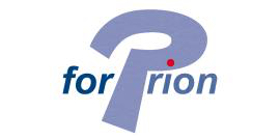FORPRION
BAVARIAN RESEARCH ASSOCIATION PRIONS

Bay 1 Occurence of TSE in natural habitats: Transmission of prions through wild animals and farmed wild ruminants in Northern Bavaria
During the reporting period we established a network to obtain a representative number of samples for detection of TSE from all over Northern Bavaria. A logistic system enables us to pick up samples – usually heads of wild or farmed wild animals – and forward them to a processing facility where the essential specimens are recovered. These are immediately transported to CENAS AG and stored there at –20°C until tested. From each animal the obex region, tonsils and lymph nodes are isolated and tested. The reason is that infective prions can be detected preferentially in one of these organs dependent on the progression of the disease. All samples were tested with the BioRad Platelia® BSE test. So far, specimens from 851 animals have been collected. The result of all tested samples were negative. For the investigation of Listeria spp. negative tested lymph nodes samples were detected. Three samples (6,8%) were positive for Listeria monocytogenes. This result is in a little bit higher as found in similar studies for Oberfranken-Mittelfranken, but it is similar with the results found in Southern Bavaria and does reflect the natural situation.



